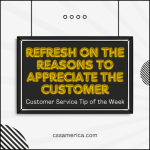 Change can result in fear. Particularly where change is thrust upon someone very suddenly, it can create shock or disbelief. Sometimes that change is not something an organization can plan for; it therefore cannot adequately prepare its employees for what’s ahead…at least initially.
Change can result in fear. Particularly where change is thrust upon someone very suddenly, it can create shock or disbelief. Sometimes that change is not something an organization can plan for; it therefore cannot adequately prepare its employees for what’s ahead…at least initially.
In this COVID world, Change Management is about dealing with the unknowns, but still developing a plan for the future. It’s about managing organizational strategy for the long-term, while still developing an agile mindset and approach in the near-term. It’s about dealing with employee emotions and continually trying to motivate them, while at the same time having the disadvantage of not having them in a room with you to gauge their feelings, gauge their expressions, and gauge many of their behaviors.
“Providing facts about how past decisions were made…enable employees to understand how decisions will be made in the future.”
So, organizations need to create their own Change Management model that coincides with the Change Management model for its employees.
Talking with Employees about the Change that was Made
For this conversation, let’s focus on the early stages of organizational change. After having made the immediate and necessary adjustments in staffing, expenditures, and operations to offset lost revenue and inflows, the organization needs to begin explaining in some clear and objective detail why that needed to happen. Particularly for those that are still with your organization, employees need to understand the facts behind the action, because facts are something concrete that enable employees to more logically accept decisions that were made in the past and understand how decisions will be made in the future.
Let me repeat. The reason to explain to current employees in some detail and factually why recent decisions were made is so they feel like they understand that future decisions will be based on facts and objectivity, and they know the criteria for those decisions.
More Facts about the Past, Less Fear about the Future
In other words, you’re not only creating a dialogue with staff by explaining details on the “why” of the changes, but you’re also addressing their fear of the unknown by at least helping them to understand a process and a list of criteria that you might go through in the future to make similar decisions.
When you’re thinking about the importance of Change Management for an organization and how that relates to employee communications, don’t underestimate the importance of being open, dialogue-oriented, and factual about the reasons for the past change.
Help employees to more objectively understand how decisions could be made moving forward.





















